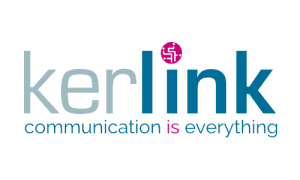20.08.17 | Kerlink to Demo Remote Device-Management Service For IoT Endpoints at LoRa Alliance Meeting in Philadelphia
Kerlink to Demo Remote Device-Management Service
For IoT Endpoints at LoRa Alliance Meeting in Philadelphia
Service Enables Secure, Simultaneous Control of Internet of Things Devices
To Update, Optimize and Configure Functions from a Central Interface

PRESS RELEASE
PHILADELPHIA – June 13, 2017, 06:00 PM CET – Kerlink (ALKLK – FR0013156007), a specialist and global leader in network solutions dedicated to the Internet of Things (IoT), will demonstrate its new device-management service for simultaneously configuring and updating devices connected to the Internet of Things at the 8th LoRa Alliance All Members Meeting, June 13-14, in Philadelphia.
Device management (DM) of IoT-connected endpoints is a challenging and vital feature for companies that increasingly depend on the IoT to streamline their operations or generate new revenue streams for their business. With billions of sensors, accelerometers, actuators and other devices expected to be connected to the IoT in the future, remotely updating software and firmware, adding new functionality, installing applications, and configuring, monitoring or provisioning devices is key to maintaining their efficient, responsive performance.
Although Low Power Wide Area (LPWA) networks offer lower data rates than traditional cellular technologies, or have to follow specific duty-cycle limitations inherent in the unlicensed spectrum (ISM band), device management is a vital part of the services that will shortly be proposed for public or private operators to update their fleets of IoT devices that are connected to those networks.
“Secure, simultaneous, remote device management is a crucial function for our customers who want to continuously optimize, monetize and secure their connected devices,” said Yannick Delibie, Kerlink co-founder, CTIO, and CEO of its U.S. subsidiary, Kerlink Inc. “This capability is the final major step in Kerlink’s complete network solution, which means our customers can count on us to take them from the drawing board to quickly monitoring, managing and scaling their connected devices, and permanently keep them operating at optimal performance from a central management interface.”
In line with its strategy to continuously strengthen its equipment-and-services offer by, for example, incorporating robust, open protocols for its customers, Kerlink plans to use IoTerop’s Lightweight M2M stack, known as IOWA, for customers’ actual device updates. It is an Open Mobile Alliance (OMA) widespread protocol for device-and-service management, and is specifically designed for constrained devices, over a wide number of transports and bearers.
Kerlink’s device-update service relies on the LoRaWAN specified multi-cast capability, which makes it possible to send large payloads to multiple devices in a LoRaWAN-connected node at the same time, and allows the devices to receive this update simultaneously and reliably, with no network congestion.
- Reading the device’s existing configuration and checking its current firmware version
- Scheduling the firmware download to ensure that the endpoint will temporary be in a listening and data-reception mode (class C – downlink) on a specific shared schedule (RX Windows)
- Executing the file broadcast and download, once devices wake up as planned
- Verifying the complete download, and confirming that the device can switch to the new firmware without regression or incompatibility risk.


